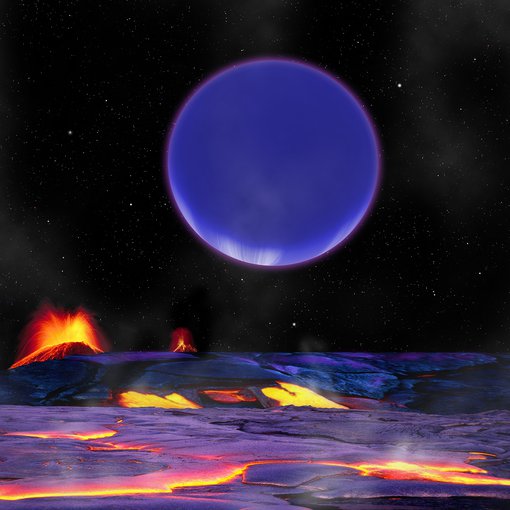
April 25, 2019
Research Highlight
Forming the Kepler-36 System

Planetrise: An artist's conception shows Kepler-36c as it might look from the surface of neighboring Kepler-36b.Image credit: Harvard-Smithsonian Center for Astrophysics/David Aguilar.
A recent paper outlines results in the development of formation models for the Kepler-36 system. Researchers updated the standard model of the system by adding detailed numerical simulations that account for the dissolution of planetesimals into the gaseous envelope of planets. The calculations for the model span from accretion and cooling up to the present age of the Kepler-36 system. The model was used to examine the Kepler-36 system and the outcomes appear to be consistent with current observations.
Kepler-36 is hotter and older than the Sun, and is located roughly 1200 light-years away in the constellation Cygnus. In 2012, astronomers discovered two planets with different densities orbiting the star. Uniquely, the orbits of the two planets are very close to one another, and are the closest-orbiting planets yet identified. The planets orbit too close to Kepler-36 for them to be habitable for life as we know it, but studying the system can expand our knowledge of how solar systems form and evolve. Such studies help astrobiologists determine the conditions needed to form a solar system capable of supporting habitable worlds.
The study, “New Formation Models for the Kepler-36 System,” was published in the The Astrophysical Journal. This work was supported by the Emerging Worlds Program. The NASA Astrobiology Program provides resources for Emerging Worlds and other Research and Analysis programs within the NASA Science Mission Directorate (SMD) that solicit proposals relevant to astrobiology research.
Additional Information:
Astronomers Discover Planetary Odd Couple (NASA)